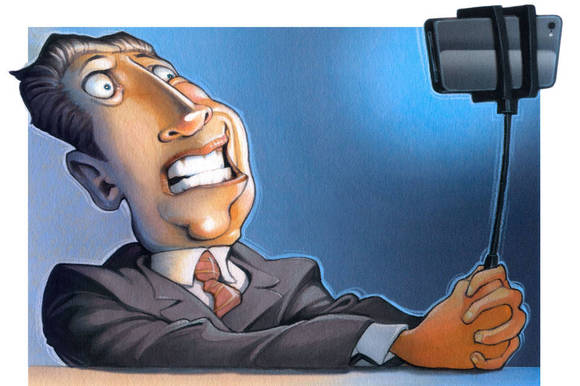Robo-recruiting speeds up the hiring process, widens reach and increases number of candidates interviewed, Hiring Managers Say.
For job seekers looking to make a good first impression, a working webcam and a tidy room might be the new firm handshake.
First-round job interviews are the latest part of the hiring process to undergo digitization as companies use videointerviews to cut recruiting costs and times. Cigna Corp. , Goldman Sachs Group Inc. and International Business MachinesCorp. are among the employers now asking some applicants to log on to a website and submit video responses tointerview questions in lieu of talking with a human. The method has grown in recent years as nearly everyone has access to a laptop or smartphone with a front-facing camera, and companies say it is an efficient, fair and inexpensive way to process hundreds of applicants.
Salt Lake City, Utah-based HireVue Inc., which provides video interviewing software for Goldman Sachs and 600 other firms, said it hosted nearly three million video interviews last year, up from 13,000 five years ago.
Most video-interviewing programs require applicants to click a link or install an app. Interviews begin with a prompt such as “Tell us about a time you had to deal with a conflict” that stays on-screen for about 30 seconds. Then, the camera turns on and the candidate has anywhere from 30 seconds to 5 minutes to respond before the next question pops up.
Human-resources staff then review the videos and pass along promising applicants to managers for consideration. Applicants who make the cut are typically invited to a one-on-one interview. That doesn’t always mean it will be in-person, though. Varsha Paidi, a software engineer hired by IBM last year, had subsequent online interviews and eventually received her job offer via text message.
Lights, Camera…Interview
Pointers for a successful video interview from recruiters and former applicants at IBM and Cigna:
Speeding up the hiring process allows recruiters to look at more applicants than before, giving companies wider reach, said Obed Louissaint, the human-resources lead for IBM’s Watson division.
Applicants, however, say that computer-guided interviews take some getting used to. Amy Hall was never the type to get nervous during job interviews, but when the 29-year-old had to complete a video interview last year for an internal jobswitch at Cigna-Healthspring, she recalled feeling apprehensive and camera-shy. She waited until after work hours and used a computer in the IT department. With the door closed, she clicked a link to Cigna’s video-interviewing site.
Replaying footage of her interview responses was “very uncomfortable” at first, she said. She resubmitted two responses, but ultimately found her stride and even preferred the video format because, she recalled, “you’re not trying to perform.” Last January, she got the job as a senior data analyst managing records for Medicare doctors.
Video interviews have significantly reduced travel costs for Cigna recruiters. Frank Abate, a senior recruiter there, said one of his colleagues racked up more than $1 million annually just traveling to meet candidates. Since adopting videointerviews four years ago, that colleague’s expenses are now under $100,000.
Companies say they seek similar traits in video interviews as they do in traditional interviews. Recruiters at IBM and Cigna said they evaluate candidates based on how well the person communicates his/her thought process, whether the person answers all parts of the question—and whether he/she makes eye contact.
According to Mary Wilson, a Cigna hiring manager, Ms. Hall’s interview stood out because her responses seemed like they were addressed to an actual person, not a camera.
“Others tend to fidget or look away, but she looked directly into the camera and answered the questions thoughtfully and completely,” she said.
HireVue, InterviewStream, WePow and other vendors that make video-interviewing software say their programs make hiring more fair because all applicants must answer the same questions, placing substance over schmoozing and small talk.
Video interviews might also present some problems because managers cannot ask follow-up questions or engage candidates further on a point, said Carol Miaskoff, assistant legal counsel for the Equal Employment Opportunity Commission. In letters to vendors, Ms. Miaskoff has suggested that companies assign more than one person to review individual videos to ensure hiring decisions aren’t made hastily.
Taking robo-recruiting one step further, some HireVue customers have an algorithm review the video interviews for them. Using data about the skills and attributes companies are seeking for a given role, a program called HireVue Insights scansvideos for verbal and facial cues that match those skills then ranks the top 100 applicants.
Human evaluation can help when things go wrong mid-interview. Bruce DelMonico, the assistant dean for admissions for the Yale School of Management—which requires M.B.A. program applicants to respond to video prompts—said that unforeseen interruptions like a roommate barging in mid-interview show how applicants think on their feet.
“All is not lost,” said Mr. DelMonico. “We pay attention to how well you respond and recover.”
Source | http://www.wsj.com/articles/video-job-interviews-hiring-for-the-selfie-age-1471366013
For job seekers looking to make a good first impression, a working webcam and a tidy room might be the new firm handshake.
First-round job interviews are the latest part of the hiring process to undergo digitization as companies use videointerviews to cut recruiting costs and times. Cigna Corp. , Goldman Sachs Group Inc. and International Business MachinesCorp. are among the employers now asking some applicants to log on to a website and submit video responses tointerview questions in lieu of talking with a human. The method has grown in recent years as nearly everyone has access to a laptop or smartphone with a front-facing camera, and companies say it is an efficient, fair and inexpensive way to process hundreds of applicants.
Salt Lake City, Utah-based HireVue Inc., which provides video interviewing software for Goldman Sachs and 600 other firms, said it hosted nearly three million video interviews last year, up from 13,000 five years ago.
Most video-interviewing programs require applicants to click a link or install an app. Interviews begin with a prompt such as “Tell us about a time you had to deal with a conflict” that stays on-screen for about 30 seconds. Then, the camera turns on and the candidate has anywhere from 30 seconds to 5 minutes to respond before the next question pops up.
Human-resources staff then review the videos and pass along promising applicants to managers for consideration. Applicants who make the cut are typically invited to a one-on-one interview. That doesn’t always mean it will be in-person, though. Varsha Paidi, a software engineer hired by IBM last year, had subsequent online interviews and eventually received her job offer via text message.
Lights, Camera…Interview
Pointers for a successful video interview from recruiters and former applicants at IBM and Cigna:
- Treat video interviews like an in-person interview: dress appropriately, maintain eye contact and silence cellphones and other devices.
- Check your internet connection, camera and audio levels before starting the interview.
- Secure a quiet room, free of housemates or pets. Make sure distracting posters or art cannot be seen in the camera frame.
- For the camera-shy, resist the urge to play back responses or watch yourse
Speeding up the hiring process allows recruiters to look at more applicants than before, giving companies wider reach, said Obed Louissaint, the human-resources lead for IBM’s Watson division.
Applicants, however, say that computer-guided interviews take some getting used to. Amy Hall was never the type to get nervous during job interviews, but when the 29-year-old had to complete a video interview last year for an internal jobswitch at Cigna-Healthspring, she recalled feeling apprehensive and camera-shy. She waited until after work hours and used a computer in the IT department. With the door closed, she clicked a link to Cigna’s video-interviewing site.
Replaying footage of her interview responses was “very uncomfortable” at first, she said. She resubmitted two responses, but ultimately found her stride and even preferred the video format because, she recalled, “you’re not trying to perform.” Last January, she got the job as a senior data analyst managing records for Medicare doctors.
Video interviews have significantly reduced travel costs for Cigna recruiters. Frank Abate, a senior recruiter there, said one of his colleagues racked up more than $1 million annually just traveling to meet candidates. Since adopting videointerviews four years ago, that colleague’s expenses are now under $100,000.
Companies say they seek similar traits in video interviews as they do in traditional interviews. Recruiters at IBM and Cigna said they evaluate candidates based on how well the person communicates his/her thought process, whether the person answers all parts of the question—and whether he/she makes eye contact.
According to Mary Wilson, a Cigna hiring manager, Ms. Hall’s interview stood out because her responses seemed like they were addressed to an actual person, not a camera.
“Others tend to fidget or look away, but she looked directly into the camera and answered the questions thoughtfully and completely,” she said.
HireVue, InterviewStream, WePow and other vendors that make video-interviewing software say their programs make hiring more fair because all applicants must answer the same questions, placing substance over schmoozing and small talk.
Video interviews might also present some problems because managers cannot ask follow-up questions or engage candidates further on a point, said Carol Miaskoff, assistant legal counsel for the Equal Employment Opportunity Commission. In letters to vendors, Ms. Miaskoff has suggested that companies assign more than one person to review individual videos to ensure hiring decisions aren’t made hastily.
Taking robo-recruiting one step further, some HireVue customers have an algorithm review the video interviews for them. Using data about the skills and attributes companies are seeking for a given role, a program called HireVue Insights scansvideos for verbal and facial cues that match those skills then ranks the top 100 applicants.
Human evaluation can help when things go wrong mid-interview. Bruce DelMonico, the assistant dean for admissions for the Yale School of Management—which requires M.B.A. program applicants to respond to video prompts—said that unforeseen interruptions like a roommate barging in mid-interview show how applicants think on their feet.
“All is not lost,” said Mr. DelMonico. “We pay attention to how well you respond and recover.”
Source | http://www.wsj.com/articles/video-job-interviews-hiring-for-the-selfie-age-1471366013


 RSS Feed
RSS Feed
